In Perpignan, the RN has also won over the bourgeoisie
Louis Aliot's conquest of Perpignan is not only notable for the city's size (121,681 inhabitants). In fact, the duel victory (against outgoing mayor Jean-Marc Pujol, Les Républicains) in the second round is exceptional for the Rassemblement National (RN): in 2014, only Cogolin (Var) was won in this way, again against a right-wing list.
Nicolas Lebourg, University of Montpellier
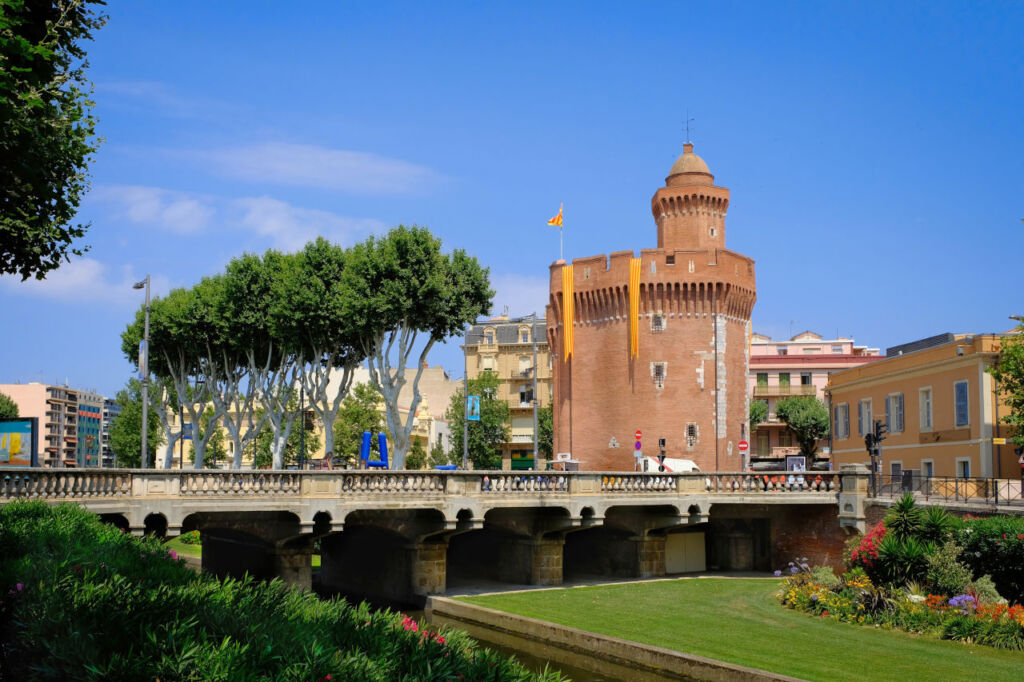
To win a duel, however, you need to create a temporary alliance between citizens with divergent socio-economic interests. The RN is normally powerful among the working classes, but distinctly weaker among other social sectors: in the recent European elections it won 40% of the working-class vote, 30% of that of households living monthly on less than 1,200 euros a month (when La République en Marche won just 11% there).
The capture of Perpignan is therefore particularly significant in terms of the successful fusion of the right, thanks to the overcoming of Lepénisme's popular base.
Rallying the wealthy classes
Already in 2014, the list led by Louis Aliot achieved notable successes in middle-class Perpignan neighborhoods. In polling station no. 52, the Mas LLaro district of villas with secure swimming pools at the eastern end of the city, a very upmarket area with no ethnic or social mix, his score was 50.6%.
If another sociological trait polarized the vote to the right, the result could have been even more significant: in the residential district of Las Cobas, polling station n°48 with 10.6% pieds-noirs on its electoral roll (according to dates and places of birth) voted Aliot at 55.4%, while their more modest counterparts in the Moulin à Vent district voted Lepéniste less strongly.
A seductive liberal discourse
Cross-referencing the FN membership file, the price per square meter in polling stations and the comparative scores of Marine Le Pen and Louis Aliot sheds light on one particular point:
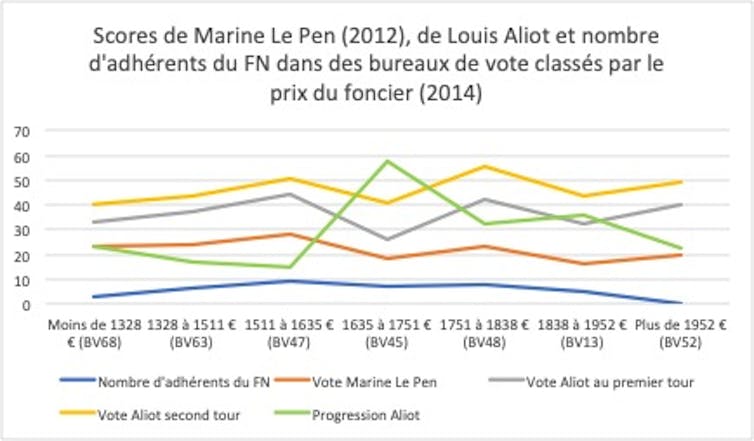
Nicolas Lebourg, Author provided
The evidence of Louis Aliot's local added value is obvious, even though his opponents Jean-Marc Pujol and Romain Grau (LREM) denied it throughout the 2020 campaign.
The declassified middle classes provide the bulk of the party's activists and have a normalizing effect on the party's presence: its score correlates with this. However, in the most affluent category, things are different: while bureau 52 has no militants, "aliotism" does have a solid base there, albeit with less room for growth than in the middle classes.
The cost in social capital of direct involvement with the FN (through membership) was still too high, but that didn't prevent people from sharing its views.
In 2020, by investing in right-wing notables, by emphasizing the themes of security and prosperity to be regained, and by delivering a liberal discourse far removed from that of Marine Le Pen, Louis Aliot won the day by succeeding in bringing together the working classes and the well-off.
A new champion
In short, Louis Aliot's list and campaign to raise his profile have played the same role among the more affluent as that of the less affluent. This accommodation does not only correspond to that of the party, as shown by the evolution of the electoral percentages granted by Mas Llaro (polling station 711, after the redistribution of polling stations):
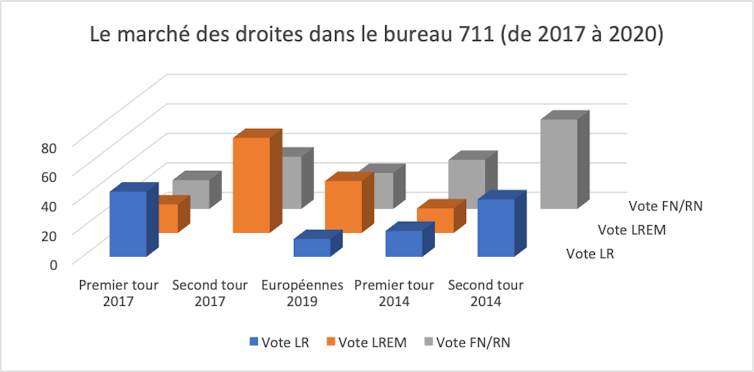
Nicolas Lebourg, Author provided
This Fillonist electorate, which had largely voted for Emmanuel Macron in the second round of the presidential election, retained its confidence in LREM at the European elections, but in 2020 returned to its pro-Aliot stance.
What we have here is a right-wing "order" group looking for a champion. It doesn't consider the RN's program to be credible, as it is too anti-business, but nonetheless sees in Louis Aliot the political offer that ensures cultural conservatism, security and ethnic order, and economic liberalism.
It's a fusion of the right that's taking place, demonstrating how the rallying of three Romain Grau list running mates to Louis Aliot, in the run-up to the elections, was not just a question of individuals, but the meeting of a political offer and a social demand.
A concrete safety program
Once elected, Louis Aliot announced that he would take direct charge of the issue of security. This issue has always been at the heart of all FN municipal campaigns in Perpignan, but this was the first time that the list presented a concrete program, listing a series of precise measures. While the city saw a significant drop in non-violent thefts under the previous mandate, attacks on individuals are still on the rise, particularly assault and battery, which has risen by 24.4% since 2013.
In January 2020, an IFOP-Semaine du Roussillon-Sud Radio poll showed that "security of property and people" was considered to be a voting determinant by 48% of Perpignan voters polled.
Take, for example, the western Bas Vernet district, a modest area among the city's priority districts, with real safety problems, particularly in the Cité des Oiseaux area.
61% of Bas Vernet Ouest residents felt that security would be an important factor in their vote. And indeed, the corresponding polling station gave Louis Aliot 61.65% of its votes in the second round.
A convergence of working-class and upmarket neighborhoods
Les Oiseaux and Mas Llaro, so different socially, converge in the podium of pro-Aliot polling stations. Although Marine Le Pen only beat Emmanuel Macron in one polling station in Perpignan during the second round of the presidential election, this congruence enabled the construction of a political majority.
But it has not been achieved without splits within the working classes. Indeed, the city's poor neighborhoods are heavily populated by people from the southern shores of the Mediterranean - particularly in the run-down old town and northern districts.
In 2014, it was these voters of North African origin who saved the incumbent mayor. Normally left-wing voters, they mobilized for the right-wing mayor in the first round, and over-mobilized in the second.
The 2020 campaign was thus structured by a strategy designed to maneuver this sociology. Jean-Marc Pujol's teams did their utmost to mobilize the northern neighborhoods and their population of North African origin. Louis Aliot, for his part, avoided scaring them.
Although he launched his campaign with the support of Éric Zemmour in a hall packed with a very "bourgeois" audience, he then carefully omitted the themes of Islam and immigration.
In the housing estates, mobilization is no longer enough
The result at the ballot box can be read with the example of the cité Clodion polling station.
With the highest rate of Arab-Muslim first names on his electoral list in the whole town (54.4%) and only one FN activist, he gave Jean-Marc Pujol his best score of 2014 (44.4%) and his best second-round result (up 34.7 points).
In 2020, the city's new office saw its turnout rise by 13 points in the second round, with Louis Aliot scoring a low of 20.45%. The dynamic was structuring... but not sufficient, as it was too narrowly focused on the territory: most of the working-class neighborhoods were not over-mobilized by the presence of a gentrified RN candidate.
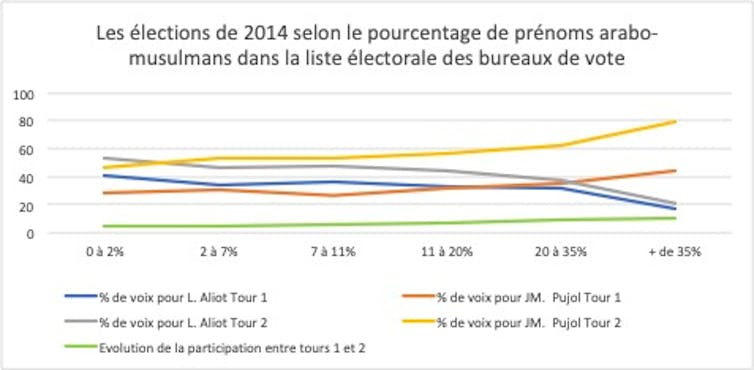
The question can be answered by comparing three maps:
- that of the Aliot vote in the second round of 2014 with the main working-class areas
- the proportion of Arab-Muslim first names and the presence of Muslim places of worship, both by geographer Sylvain Manternach
- the Aliot vote published by the regional daily L'Indépendant the day after the second round in 2020.
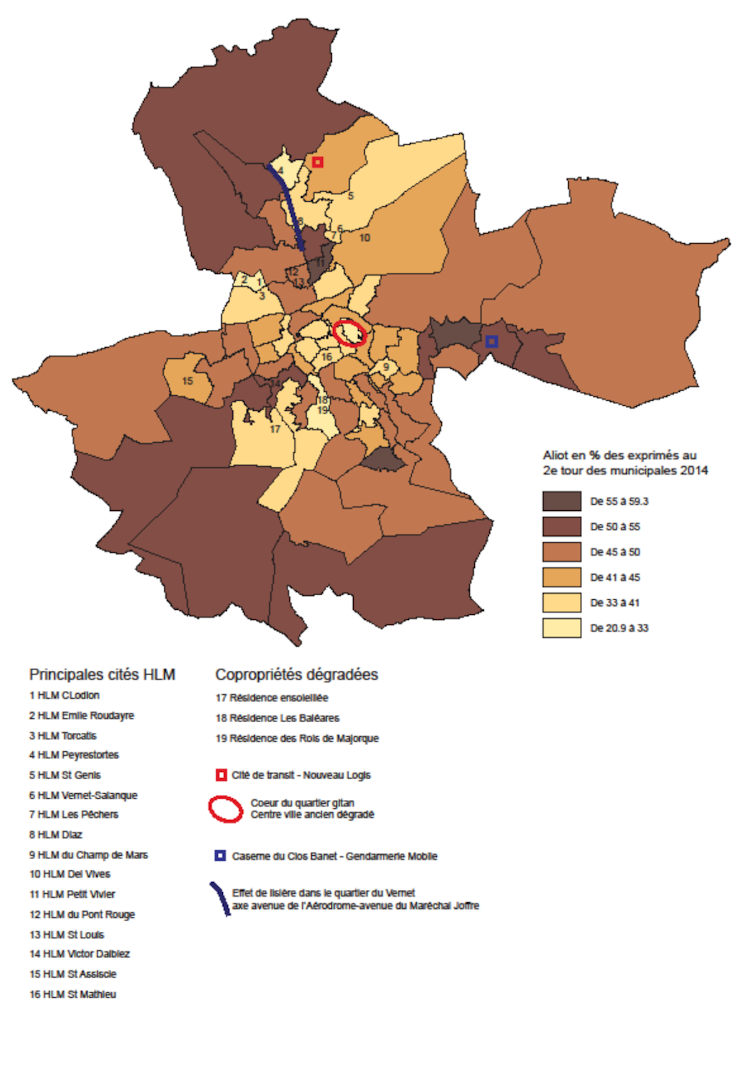
Citizenship Chair, Author provided
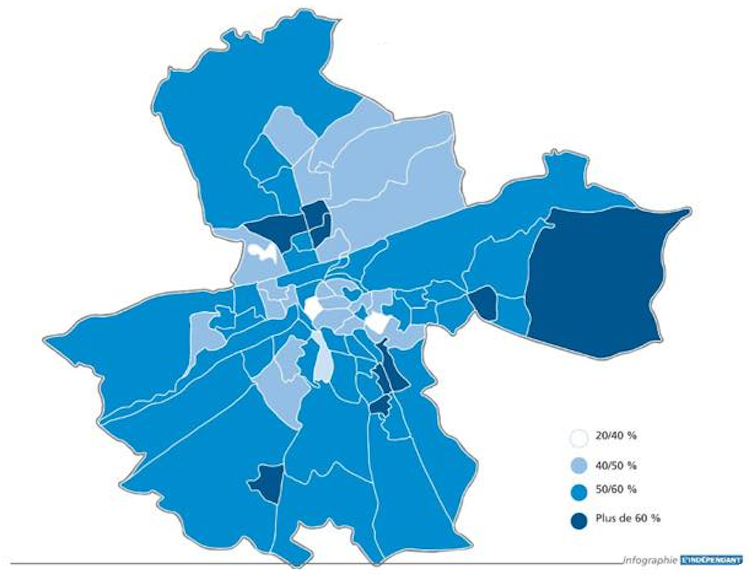
L'Indépendant
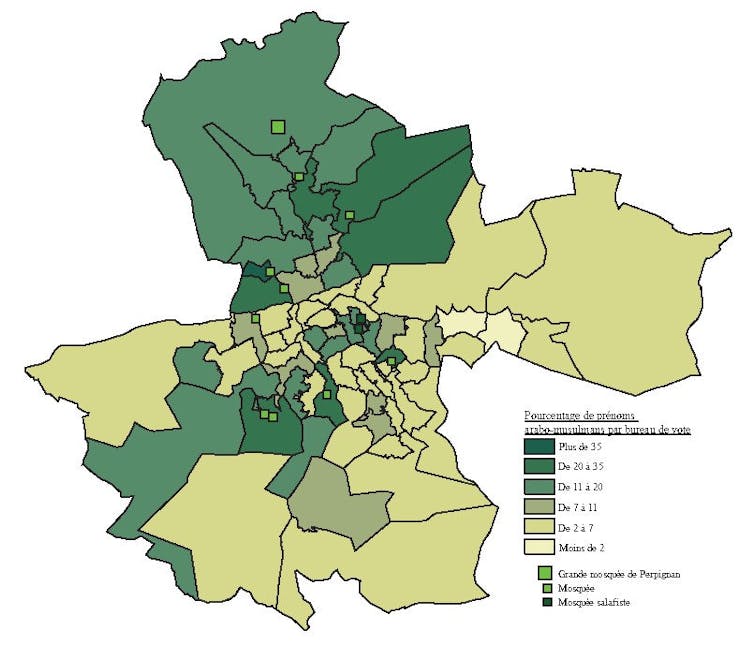
Citizenship Chair, Author provided
The pattern that emerges is the opposite of that of the proponents of the "peripheral France" thesis.
The RN vote was not built in working-class neighborhoods as a consequence of multicultural society, but around them, with peaks in affluent areas, against the multi-ethnic society deemed responsible for financial waste and insecurity, while the exhaustion of the clientelist system has disaffiliated working-class areas and prevented overmobilization from operating this time.
Insiders and outsiders
The natural objection to our demonstration would be that the electoral movements are a consequence of the voting conditions induced by the coronavirus crisis and an excessively long inter-trial period that demobilized whole sections of the electorate , as shown by political scientist Céline Braconnier. We can demonstrate that the issue is structural with a few diagrams.
Half of the Perpignan electorate are natives of the département, the other half from other departments of mainland France. In the vocabulary of everyday life in Perpignan, it's a difference summed up as "Catalans" and "Gavatx", those "of origin" and those from beyond the village of Salses. These "allochtones", as we prefer to call non-native Perpignanese, tend to live in affluent neighborhoods:
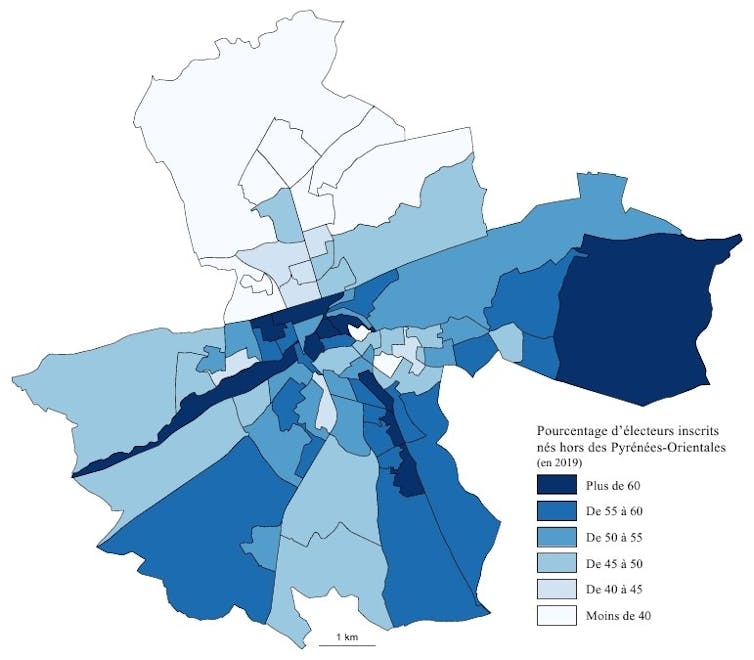
Citizenship Chair, Author provided
As we demonstrated with Jérôme Fourquet and Sylvain Manternach in our study of the city for the Citizenship Chair at Sciences Po Saint-Germain-en-Laye, these non-natives vote much more liberally than the native-born:
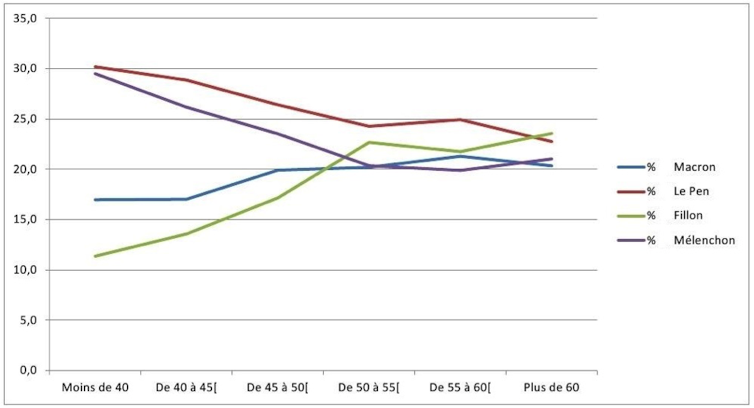
Citizenship Chair, Author provided

Citizenship Chair, Author provided
However, it turns out that these people, who are more integrated into the economic system and less into the local socio-cultural system, were more mobilized during the municipal elections.
If we observe the ballot by classifying polling stations by turnout :
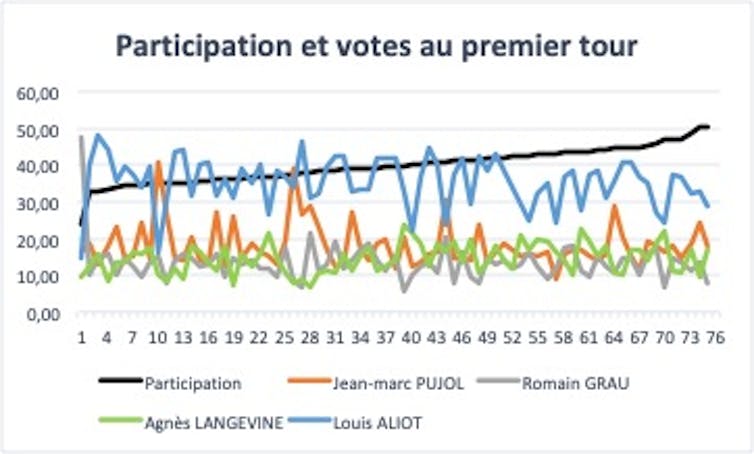
N. Lebourg, Author provided
Then classify the offices according to the percentage of non-native population:
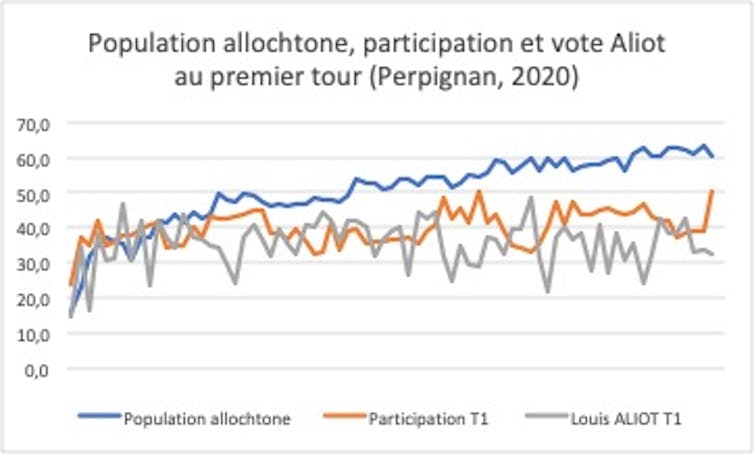
N. Lebourg, Author provided

N. Lebourg, Author provided
It appears that the Aliot list suffered in the first round from a demobilization of the native electorate that favors it. Although he almost doubled Jean-Marc Pujol's score, this level masks a differentiated abstention rate, due to the greater civic integration of non-natives, who are less RN and more present at the ballot box.
Of course, the return of the native turnout in the second round enabled Louis Aliot to win back some votes, but he also owes his victory to the part of the liberal-conservative electorate from the metropolis that has now turned to him, contrary to previous trends.
In Perpignan, the right has merged ideologically, sociologically and electorally. The meeting of the local working classes and the wealthy metropolitan classes has created a social bloc that should have an impact on the near future of the Rassemblement National, since in previous departmental and regional elections it achieved excellent scores in the first round by capturing the popular vote, but was unable to attract beyond that to secure a majority in the second round. Victory in Perpignan is no accident, and the possibility of a line to open up the RN has been raised.![]()
Nicolas Lebourg, Researcher at CEPEL (CNRS-University of Montpellier), University of Montpellier
This article is republished from The Conversation under a Creative Commons license. Read theoriginal article.